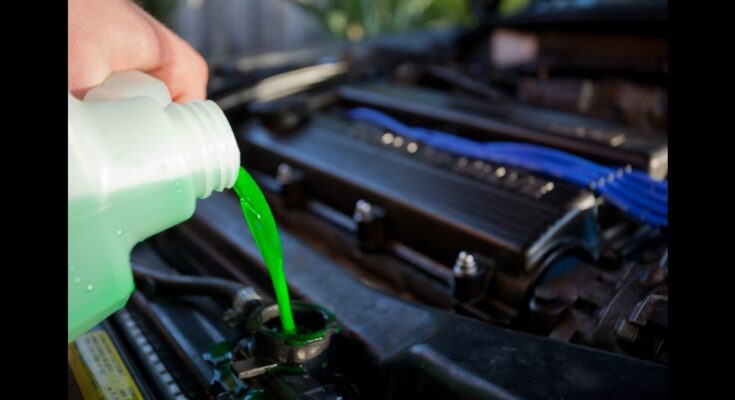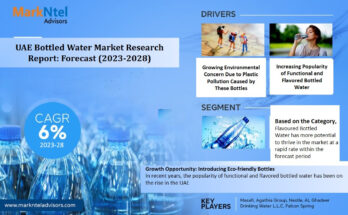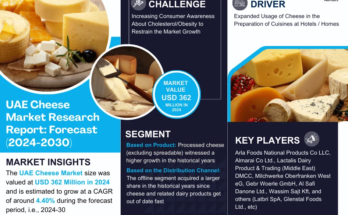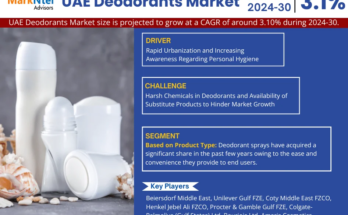According to TechSci Research report, “Automotive Coolant Aftermarket – Global Industry Size, Share, Trends, Competition Forecast & Opportunities, 2029”. The global Automotive Coolant Aftermarket stood at USD 4.90 Billion in 2023 and is anticipated to grow with a CAGR of 5.29% in the forecast period, 2025-2029. The automotive coolant aftermarket plays a crucial role in ensuring the efficient operation and longevity of vehicle cooling systems. Coolant, also known as antifreeze, is a fluid that circulates through the engine and radiator, absorbing and dissipating excess heat to prevent the engine from overheating. While original equipment manufacturers (OEMs) often provide coolant with new vehicles, the aftermarket segment caters to the replacement and maintenance needs of vehicle owners. This overview delves into the key aspects of the automotive coolant aftermarket, including market trends, drivers, challenges, and future prospects.
The automotive coolant aftermarket has witnessed steady growth in recent years, driven by factors such as the increasing global vehicle parc, rising awareness about the importance of regular maintenance, and advancements in coolant technologies. As vehicles become more sophisticated, the demand for high-performance coolants that can withstand extreme temperatures and provide corrosion protection has surged. Additionally, the aftermarket benefits from the expanding vehicle aftermarket industry as a whole, as consumers seek cost-effective and reliable solutions for vehicle maintenance and repair.
The automotive coolant aftermarket offers a variety of coolant types, with the most common being ethylene glycol-based and propylene glycol-based coolants. Ethylene glycol coolants are widely used due to their excellent heat transfer properties, while propylene glycol coolants are preferred for their non-toxic nature, making them environmentally friendly. Hybrid coolants, combining the benefits of both types, have also gained traction. Moreover, advancements in coolant technologies include long-life coolants, which offer extended service intervals, and organic acid technology (OAT) coolants, known for their corrosion resistance.
Asia-Pacific dominates the automotive coolant aftermarket, driven by the region’s significant vehicle population and the growing automotive industry. China, India, and Japan are key contributors to the market, propelled by their expanding middle-class population and increasing vehicle ownership. North America and Europe also hold substantial market shares, with a mature automotive aftermarket and a strong emphasis on vehicle maintenance. Latin America and the Middle East & Africa exhibit potential for growth, fueled by rising vehicle sales and a burgeoning aftermarket.
The automotive coolant aftermarket features a competitive landscape with several key players vying for market share. Companies such as Prestone, TotalEnergies, and Valvoline dominate the global market. These players focus on product innovation, strategic partnerships, and mergers and acquisitions to strengthen their market presence. Brand recognition and reputation play a crucial role in consumer preferences, and companies invest in marketing and promotional activities to build and maintain trust.
Despite the positive growth trajectory, the automotive coolant aftermarket faces challenges, including environmental concerns related to coolant disposal and the need for proper recycling processes. Additionally, the market is influenced by the volatility in raw material prices, impacting production costs. However, these challenges also present opportunities for market players to invest in eco-friendly coolant formulations and explore sustainable disposal methods. Moreover, the increasing trend of Do-It-Yourself (DIY) vehicle maintenance provides an avenue for aftermarket players to tap into a growing consumer segment.
The automotive coolant industry is subject to various regulations and standards aimed at ensuring product safety, environmental compliance, and consumer protection. Regulatory bodies such as the Environmental Protection Agency (EPA) in the United States and the European Chemicals Agency (ECHA) in Europe play pivotal roles in setting guidelines for coolant composition, labeling, and disposal. Market players must stay abreast of evolving regulations and adapt their products and processes accordingly to remain compliant and competitive.
The future of the automotive coolant aftermarket looks promising, driven by technological advancements, increasing vehicle complexity, and a growing emphasis on sustainable and eco-friendly solutions. The development of smart coolants with advanced monitoring capabilities and improved heat transfer properties is anticipated. Moreover, the rise of electric vehicles and hybrid technologies presents new opportunities for coolants tailored to the unique cooling requirements of these vehicles. As the automotive industry continues to evolve, the coolant aftermarket is poised to adapt and thrive.
Browse over market data Figures spread through 180 Pages and an in-depth TOC on “ Global Automotive Coolant Aftermarket.” @ https://www.techsciresearch.com/report/automotive-coolant-aftermarket/21447.html
The North American automotive coolant aftermarket is characterized by a mature automotive industry and a high vehicle parc. The region’s market is driven by the need for regular maintenance and replacement of coolants in a large number of vehicles. Stringent environmental regulations in North America have led to a growing demand for eco-friendly and long-lasting coolants, pushing manufacturers to innovate and comply with these standards. Additionally, the presence of a well-established distribution network and a strong focus on technological advancements contribute to the region’s prominence in the global automotive coolant aftermarket.
The European and CIS automotive coolant aftermarket is influenced by the robust automotive sector in Europe and the increasing vehicle ownership in CIS countries. With a strong emphasis on environmental sustainability, European regulations drive the demand for coolant solutions that meet strict environmental standards. The region is characterized by a diverse range of vehicles, including a significant number of diesel engines, necessitating specific coolant formulations. The aftermarket players in this region focus on strategic partnerships with automotive OEMs to ensure the compatibility of their products with the latest vehicle technologies.
The Asia Pacific region dominates the global automotive coolant aftermarket, driven by the sheer size of the automotive market in countries like China and India. The increasing vehicle production, expanding middle class, and rising awareness about vehicle maintenance contribute to the substantial demand for aftermarket coolant products. The region is also witnessing a shift towards electric vehicles, leading to a demand for coolants tailored to these advanced technologies. Moreover, the presence of a vast e-commerce ecosystem in Asia Pacific facilitates easy accessibility and distribution of coolant products to a diverse consumer base.
South America’s automotive coolant aftermarket is characterized by a mix of mature and emerging markets. The region experiences a steady demand for coolants due to the aging vehicle parc and the importance of maintenance in ensuring vehicle longevity. Economic factors play a significant role in shaping the aftermarket landscape, with price sensitivity influencing consumer choices. Regulatory frameworks, though less stringent compared to North America and Europe, are evolving, prompting aftermarket coolant manufacturers to align their products with emerging environmental standards.
The Middle East and Africa automotive coolant aftermarket are influenced by factors such as climate, economic development, and vehicle ownership patterns. In this region, extreme temperatures necessitate coolants that can withstand high heat levels, driving the demand for specialized formulations. Economic growth and increasing disposable income contribute to the growth of the aftermarket as vehicle ownership rises. However, market challenges include the prevalence of counterfeit products and the need for aftermarket players to establish reliable distribution networks to reach a geographically dispersed consumer base.
Major companies operating in the Global Automotive Coolant Aftermarket are:
- Valvoline Inc
- Exxon Mobil Corporation
- BASF SE
- TotalEnergies SE
- Chevron Corporation
- Shell plc
- Prestone Products Corporation
- Arteco
- AMSOIL INC.
- Recochem Corporation
To Download FREE Sample Pages of this Report📥 @ https://www.techsciresearch.com/sample-report.aspx?cid=21447
Customers can also request 10% free customization in this report.
“The Automotive Coolant Aftermarket is experiencing robust growth globally, driven by the escalating number of vehicles on the road, coupled with a focus on environmental sustainability. Technological advancements, such as long-life formulations and hybrid solutions, contribute to market expansion. The market is forecasted to continue an upward trajectory, emphasizing the importance of staying abreast of regional regulations, fostering strategic partnerships, and embracing digital marketing trends.” said Mr. Karan Chechi, Research Director with TechSci Research, a research-based management consulting firm.
“Automotive Coolant Aftermarket – Global Industry Size, Share, Trends Opportunity, and Forecast, Segmented By Technology (Inorganic Additive Technology (IAT), Organic Additive Technology (OAT), Hybrid Organic Acid Technology (HOAT)), By Product (Ethylene Glycol, Propylene Glycol, Glycerin), By Vehicle Type (Passenger Cars, Medium & Heavy Commercial Vehicles, Light Commercial Vehicles), By Region, Competition, 2019-2029”, has evaluated the future growth potential of Global Automotive Coolant Aftermarket and provides statistics & information on market size, structure, and future market growth. The report intends to provide cutting-edge market intelligence and help decision-makers take sound investment decisions. Besides, the report also identifies and analyzes the emerging trends along with essential drivers, challenges, and opportunities in the Global Automotive Coolant Aftermarket.
You may also read:
Luxury Shuttle Bus Market Outlook & Forecast [2029]
Automotive Plastics Market [2029]- A Deep Dive into the Latest Market Trends, Market Segmentation
Fire Trucks Market Analysis, Development [2029], Key Terms
Automotive Pressure Pumping Market [2029] – Analysis, Trends, & Insights
Table of Content-Automotive Coolant AfterMarket Industry
- Introduction
1.1. Product Overview
1.2. Key Highlights of the Report
1.3. Market Coverage
1.4. Market Segments Covered
1.5. Research Tenure Considered
- Research Methodology
2.1. Objective of the Study
2.2. Baseline Methodology
2.3. Key Industry Partners
2.4. Major Association and Secondary Sources
2.5. Forecasting Methodology
2.6. Data Triangulation & Validation
2.7. Assumptions and Limitations
- Executive Summary
3.1. Market Overview
3.2. Market Forecast
3.3. Key Regions
3.4. Key Segments
- Impact of COVID-19 on Global Automotive Coolant Aftermarket
- Global Automotive Coolant Aftermarket Outlook
5.1. Market Size & Forecast
5.1.1. By Value
5.2. Market Share & Forecast
5.2.1. By Technology Market Share Analysis (Inorganic Additive Technology (IAT), Organic Additive Technology (OAT), Hybrid Organic Acid Technology (HOAT))
5.2.2. By Product Market Share Analysis (Ethylene Glycol, Propylene Glycol, Glycerin)
5.2.3. By Vehicle Type Market Share Analysis (Passenger Cars, Medium & Heavy Commercial Vehicles, Light Commercial Vehicles)
5.2.4. By Regional Market Share Analysis
5.2.4.1. Asia-Pacific Market Share Analysis
5.2.4.2. Europe & CIS Market Share Analysis
5.2.4.3. North America Market Share Analysis
5.2.4.4. South America Market Share Analysis
5.2.4.5. Middle East & Africa Market Share Analysis
5.2.5. By Company Market Share Analysis (Top 5 Companies, Others – By Value, 2023)
5.3. Global Automotive Coolant Aftermarket Mapping & Opportunity Assessment
5.3.1. By Technology Market Mapping & Opportunity Assessment
5.3.2. By Product Market Mapping & Opportunity Assessment
5.3.3. By Vehicle Type Market Mapping & Opportunity Assessment
5.3.4. By Regional Market Mapping & Opportunity Assessment
- Asia-Pacific Automotive Coolant Aftermarket Outlook
6.1. Market Size & Forecast
6.1.1. By Value
6.2. Market Share & Forecast
6.2.1. By Technology Market Share Analysis
6.2.2. By Product Market Share Analysis
6.2.3. By Vehicle Type Market Share Analysis
6.2.4. By Country Market Share Analysis
6.2.4.1. China Market Share Analysis
6.2.4.2. India Market Share Analysis
6.2.4.3. Japan Market Share Analysis
6.2.4.4. Indonesia Market Share Analysis
6.2.4.5. Thailand Market Share Analysis
6.2.4.6. South Korea Market Share Analysis
6.2.4.7. Australia Market Share Analysis
6.2.4.8. Rest of Asia-Pacific Market Share Analysis
6.3. Asia-Pacific: Country Analysis
6.3.1. China Automotive Coolant Aftermarket Outlook
6.3.1.1. Market Size & Forecast
6.3.1.1.1. By Value
6.3.1.2. Market Share & Forecast
6.3.1.2.1. By Technology Market Share Analysis
6.3.1.2.2. By Product Market Share Analysis
6.3.1.2.3. By Vehicle Type Market Share Analysis
6.3.2. India Automotive Coolant Aftermarket Outlook
6.3.2.1. Market Size & Forecast
6.3.2.1.1. By Value
6.3.2.2. Market Share & Forecast
6.3.2.2.1. By Technology Market Share Analysis
6.3.2.2.2. By Product Market Share Analysis
6.3.2.2.3. By Vehicle Type Market Share Analysis
6.3.3. Japan Automotive Coolant Aftermarket Outlook
6.3.3.1. Market Size & Forecast
6.3.3.1.1. By Value
6.3.3.2. Market Share & Forecast
6.3.3.2.1. By Technology Market Share Analysis
6.3.3.2.2. By Product Market Share Analysis
6.3.3.2.3. By Vehicle Type Market Share Analysis
6.3.4. Indonesia Automotive Coolant Aftermarket Outlook
6.3.4.1. Market Size & Forecast
6.3.4.1.1. By Value
6.3.4.2. Market Share & Forecast
6.3.4.2.1. By Technology Market Share Analysis
6.3.4.2.2. By Product Market Share Analysis
6.3.4.2.3. By Vehicle Type Market Share Analysis
6.3.5. Thailand Automotive Coolant Aftermarket Outlook
6.3.5.1. Market Size & Forecast
6.3.5.1.1. By Value
6.3.5.2. Market Share & Forecast
6.3.5.2.1. By Technology Market Share Analysis
6.3.5.2.2. By Product Market Share Analysis
6.3.5.2.3. By Vehicle Type Market Share Analysis
6.3.6. South Korea Automotive Coolant Aftermarket Outlook
6.3.6.1. Market Size & Forecast
6.3.6.1.1. By Value
6.3.6.2. Market Share & Forecast
6.3.6.2.1. By Technology Market Share Analysis
6.3.6.2.2. By Product Market Share Analysis
6.3.6.2.3. By Vehicle Type Market Share Analysis
6.3.7. Australia Automotive Coolant Aftermarket Outlook
6.3.7.1. Market Size & Forecast
6.3.7.1.1. By Value
6.3.7.2. Market Share & Forecast
6.3.7.2.1. By Technology Market Share Analysis
6.3.7.2.2. By Product Market Share Analysis
6.3.7.2.3. By Vehicle Type Market Share Analysis
- Europe & CIS Automotive Coolant Aftermarket Outlook
7.1. Market Size & Forecast
7.1.1. By Value
7.2. Market Share & Forecast
7.2.1. By Technology Market Share Analysis
7.2.2. By Product Market Share Analysis
7.2.3. By Vehicle Type Market Share Analysis
7.2.4. By Country Market Share Analysis
7.2.4.1. Germany Market Share Analysis
7.2.4.2. Spain Market Share Analysis
7.2.4.3. France Market Share Analysis
7.2.4.4. Russia Market Share Analysis
7.2.4.5. Italy Market Share Analysis
7.2.4.6. United Kingdom Market Share Analysis
7.2.4.7. Belgium Market Share Analysis
7.2.4.8. Rest of Europe & CIS Market Share Analysis




